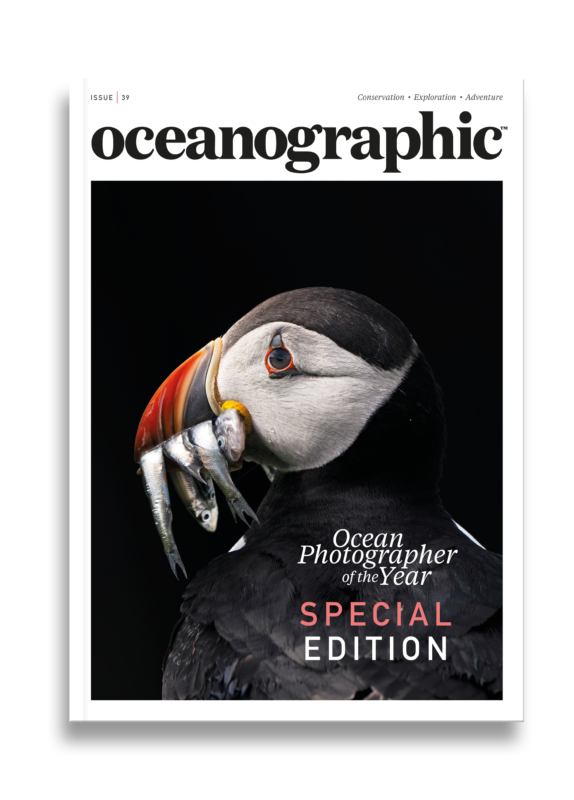Ocean alliance lifts veil of 'opaque oil spill reporting' in UK waters
Uncovering the scale of toxic pollution caused by the oil and gas industry in UK seas, a new live map has - for the first time - brought data together from across government databases to provide a clearer view of just how damaging these spills can be.
UK seas suffered more than two oil or chemical spills a day last year, totalling more than 82,000kg of oil and 149,000kg of chemicals entering British waters, a groundbreaking interactive map developed by the environmental group Oceana UK has revealed.
Uncovering the scale of toxic pollution caused by the oil and gas industry in UK seas, a new live map has – for the first time – brought together data and live information from across government databases to provide a clearer view of just how damaging these spills can be.
Until now, this data has been ‘largely hidden away’ across what campaigners have chastised as an “opaque and misleading reporting system” spread across multiple governmental databases.
In its latest bid to empower the UK public, however, Oceana – acting on behalf of the Ocean Alliance Against Offshore Drilling – has developed an interactive map, enabling the public to investigate individual spills to discover the companies responsible for them, check whether action has been taken by government, or to raise the alarm themselves.
Oil spills can be devastating for marine life. Oceana UK draws special attention to a chemical spill which occurred in the Alba oil field off the north-east coast of Scotland last summer in which 11,170 kg of chemicals – containing 2,800kg of a biocide described as “very toxic to aquatic life with long lasting effects” leaked into Scottish waters just 25km from a marine protected area.
The region is a known habitat for especially high densities of minke and killer whales, white-beaked dolphin, and harbour porpoise. Wildlife forced to swim in polluted waters risk coming into contact with these chemicals and oil through the skin, while feeding, or by inhaling toxic vapours.
Contamination from oil and gas has been shown to have severe impacts, ranging from lung disease in dolphins to cancers in seabirds, as well as deformation and breeding disruption in fish.
Despite these risks, there has been no formal investigation into this particular spill and the government has not yet responded to Oceana UK’s Freedom of Information request into details of any enforcement action or steps taken to address the spill. Oceana has since referred the Department for Energy Security and Net Zero to the Information Commissioner’s Office.
Oceana UK highlights this case to be one example of the “opaque reporting” that too often surrounds such oil spills. The ocean advocacy group also indicates that owing to the current state of poor self-reporting when such spills occur, the situation in the sea is likely to be “worse even than it appears on the map”.

According to the group’s analysis, nearly one third of the permit breach reports between January 2021 and May 2024 failed to include the volume of oil – meaning the true level of pollution is likely to be even higher.
Naomi Tilley, oil and gas campaign lead for Oceana UK, said: “This sickening level of toxic pollution should be headline news – yet for years, the opaque reporting has meant that Big Oil have been using UK waters as an oil and chemical dump without public scrutiny.
“We urge everyone who cares about our ocean to use the map to help us expose this hidden outrage. Seeing the data laid out makes it crystal clear that the oil and gas industry cannot be trusted with UK seas.
“It’s time for the government to fully implement – and make permanent – its ban on all new oil and gas.”
Campaigners celebrated an early victory last month when a court decision ruled that consent given under the Conservative government for the development of oil and gas fields across the Rosebank and Jackdaw was, in fact, given unlawfully.
It was a ruling that led to the temporary withdrawal of development and production consents for the two North Sea oil and gas projects – tipped to be the largest in UK waters – with the future of 13 further projects currently in the consenting process hung in the balance.
Equinor’s Rosebank oil field and Shell’s Jackdaw gas project both had planning approval overturned by the Scottish courts at the end of January, due to the fact that neither had taken into consideration the full and true extent of their associated climate emissions.
The courts ruled that both projects would need to reapply for environmental impact assessments that properly took into account downstream, or customer, emissions. Since the ruling, the Labour government has faced pressure from both sides, with energy companies calling for a swift reassessment and approval, and campaigners and some Labour MPs fighting to make the halt permanent.
Oceana UK – who has been calling for the permanent ban on new oil and gas development in the weeks since the ruling – has increased the weight of its argument with the launch of its oil and gas spill map.
Previous polling from the campaign group has shown that 71% of UK adults do not trust the regulator to ensure marine wildlife is protected from oil and gas drilling, while a 2024 report has shown that enforcement in this area has, historically, “been lax”. In fact, it documents that in the last five years, only two recorded convictions or fines have been given, one of which amounted to just £7,000.
Check out the UK oil and chemical spill map for live data on the plight faced by UK waters, here.


"*" indicates required fields
Printed editions
Current issue
Back issues

Back Issues
Issue 39 Special Edition: OPY2024

Back Issues
Issue 37 Wild Alaska: River & Ocean
Enjoy so much more from Oceanographic Magazine by becoming a subscriber.
A range of subscription options are available.








